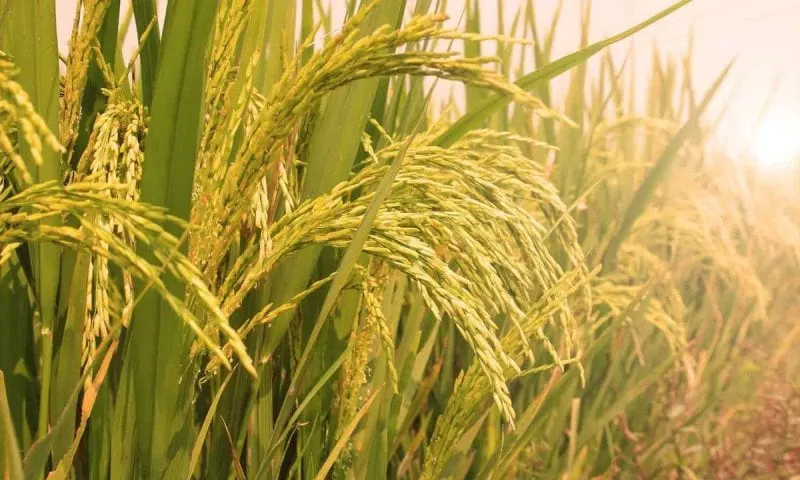Iran uses nuclear technology to produce drought-resistant rice
Iran uses nuclear technology to produce drought-resistant rice


This rice variety was obtained through targeted mutagenesis methods and originated from the popular local native variety Tarom. Key features of this variety include high resistance to drought, maintaining cooking quality, excellent aroma and flavor, and high yield. Unlike many high-yielding modified varieties that sacrifice quality for quantity, Kian has created a good balance between quantity and quality.
The yield of this variety is impressive in different conditions; in drought conditions, in brings about 3 tons of paddy per hectare, and in normal irrigation conditions, it yields nearly six tons of paddy per hectare.
In comparison, the native variety Tarom Mahali yields about 3.5 to 4 tons per hectare under normal conditions at best and only 600 kg per hectare under drought conditions, which means that in the worst case, Kian produces five times more yield than Tarom Mahali under drought conditions.
In a relevant development in November, an Iranian official underlined the use of high-yielding seeds and modern methods for rice cultivation, saying that the amount of rice production in the country had reached 2.7 million tons.
“The use of high-yielding seeds, leveling of lands and the use of new cultivation methods have increased the amount of rice production in Iran,” said Sohrab Sohrabi, the executor of the plan to increase rice cultivation in Iran.
Facilitating the production and development of the second crop or retoon is one of the policies of the Agriculture Ministry to increase the productivity of rice production, and this method consumes less water,” he added.
“With the adopted measures, the amount of rice production reached 2,700,000 tons which is a huge record in rice production,” Sohrabi said.
Read the original post here

 | Videos | More... |

Video: Nuclear energy will destroy us? Global warming is an existential threat? Chemicals are massacring bees? Donate to the Green Industrial Complex!
 | Bees & Pollinators | More... |

GLP podcast: Science journalism is a mess. Here’s how to fix it

Mosquito massacre: Can we safely tackle malaria with a CRISPR gene drive?

Are we facing an ‘Insect Apocalypse’ caused by ‘intensive, industrial’ farming and agricultural chemicals? The media say yes; Science says ‘no’
 | Infographics | More... |

Infographic: Global regulatory and health research agencies on whether glyphosate causes cancer
 | GMO FAQs | More... |

Why is there controversy over GMO foods but not GMO drugs?

How are GMOs labeled around the world?

How does genetic engineering differ from conventional breeding?
 | GLP Profiles | More... |

Alex Jones: Right-wing conspiracy theorist stokes fear of GMOs, pesticides to sell ‘health supplements’




 A single high dose of LSD can ease anxiety and depression for months
A single high dose of LSD can ease anxiety and depression for months CRISPR pork: U.S. approves first gene-edited pigs for consumption
CRISPR pork: U.S. approves first gene-edited pigs for consumption From plastic coasters to human hearts: Inside the race to print the human body
From plastic coasters to human hearts: Inside the race to print the human body Baby food panic, brought to you by trial lawyers hoping to prosecute by press release
Baby food panic, brought to you by trial lawyers hoping to prosecute by press release ‘SuperAgers’: Why some people have the brains and memory capacity of people decades younger
‘SuperAgers’: Why some people have the brains and memory capacity of people decades younger  Viewpoint: Life and death decisions: RFK, Jr.’s shady FDA “expert panels” operate in secret with no transcripts or conflict of interest reviews
Viewpoint: Life and death decisions: RFK, Jr.’s shady FDA “expert panels” operate in secret with no transcripts or conflict of interest reviews From ‘Frankenfood’ to superfood: Can the purple tomato overcome GMO myths to win over consumers?
From ‘Frankenfood’ to superfood: Can the purple tomato overcome GMO myths to win over consumers? When farmers deny science: The hypocrisy hurting agriculture’s credibility
When farmers deny science: The hypocrisy hurting agriculture’s credibility
